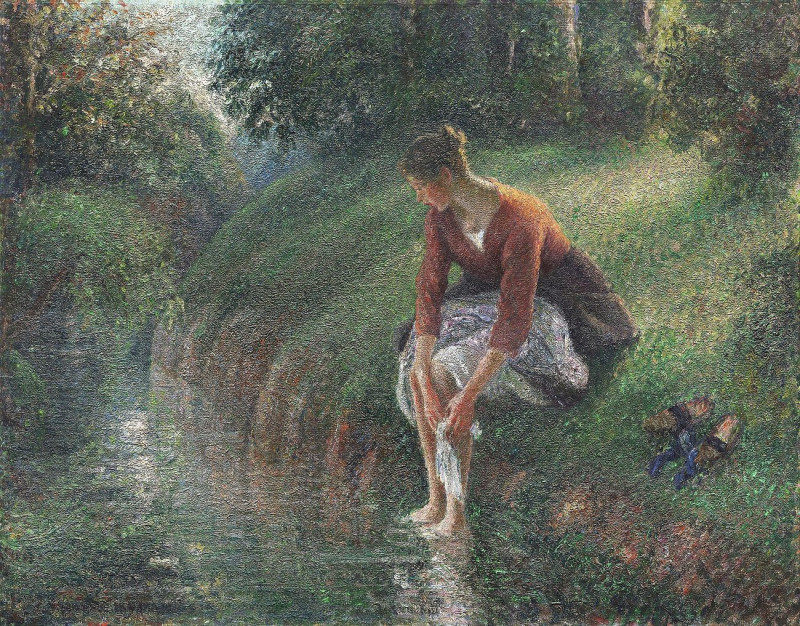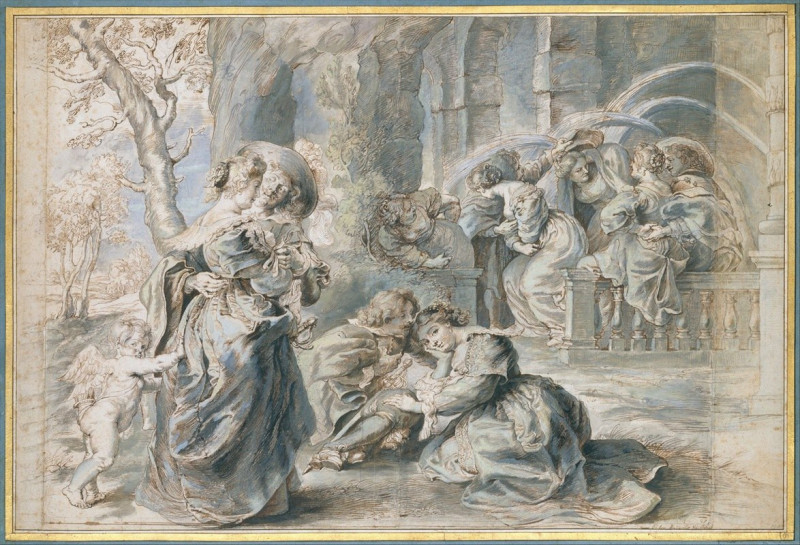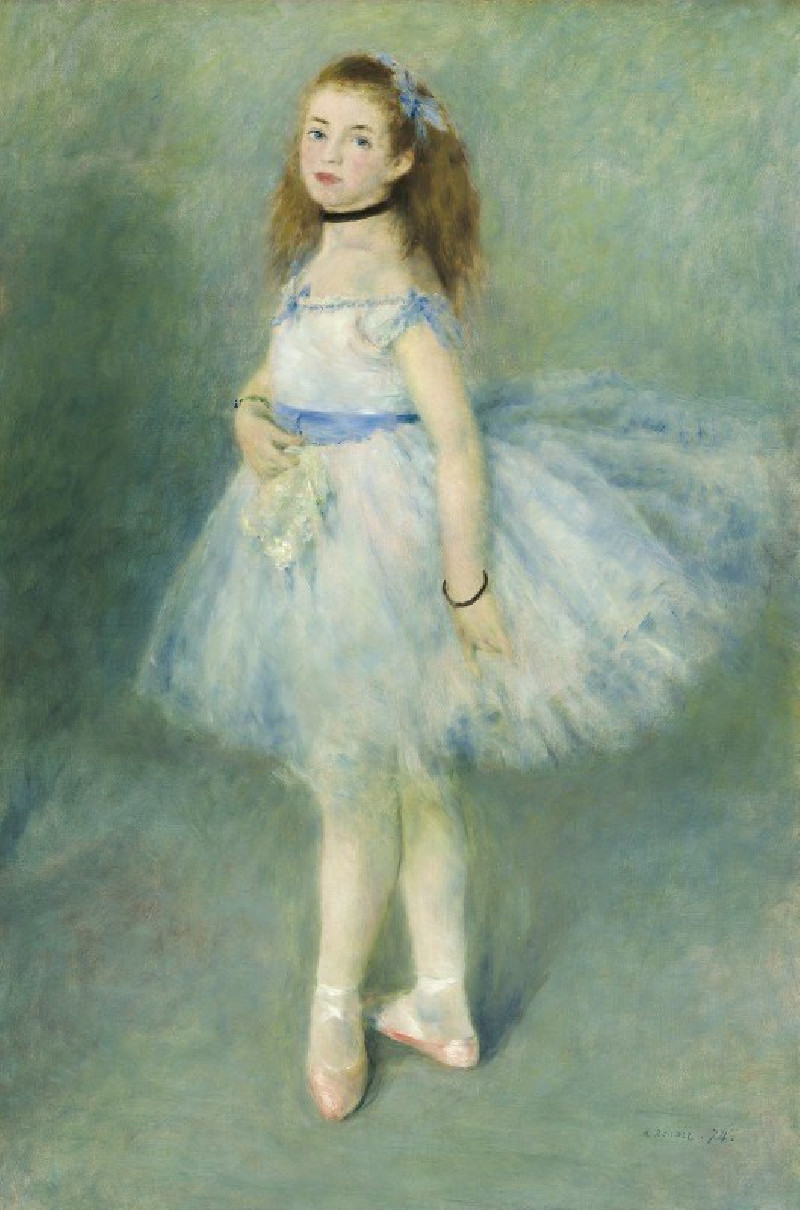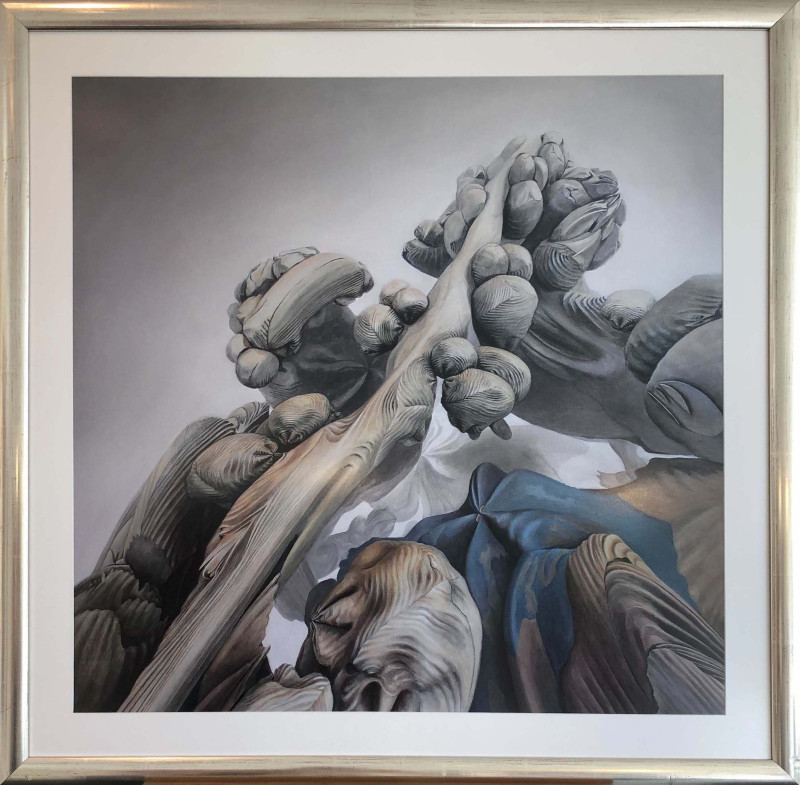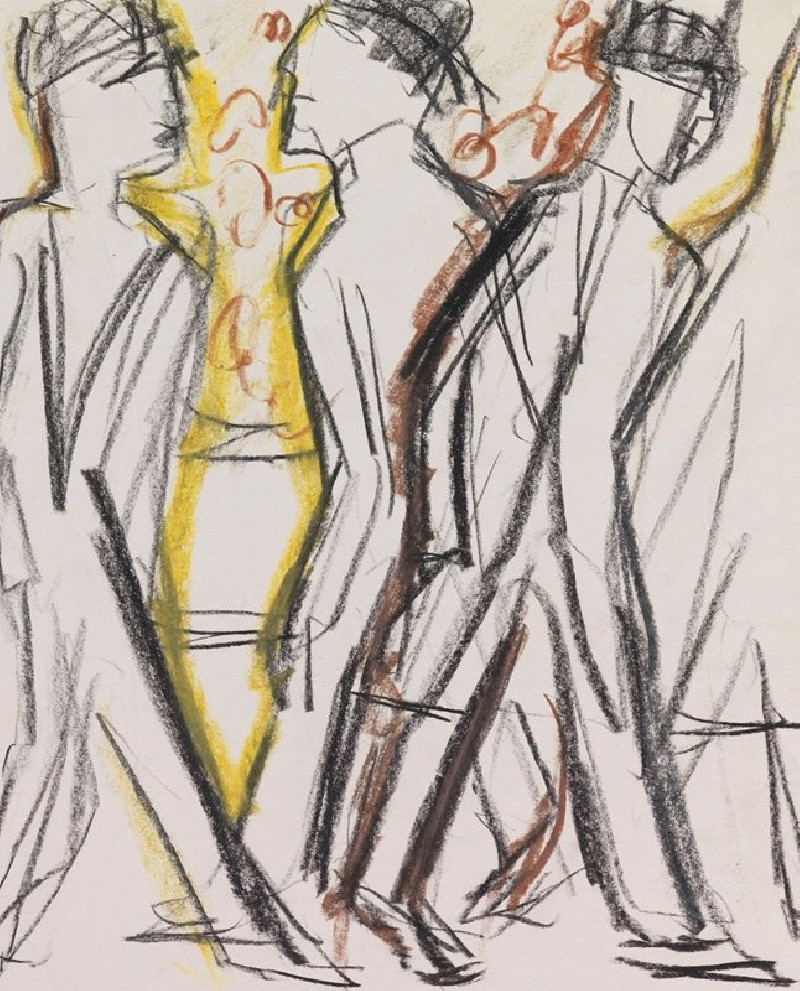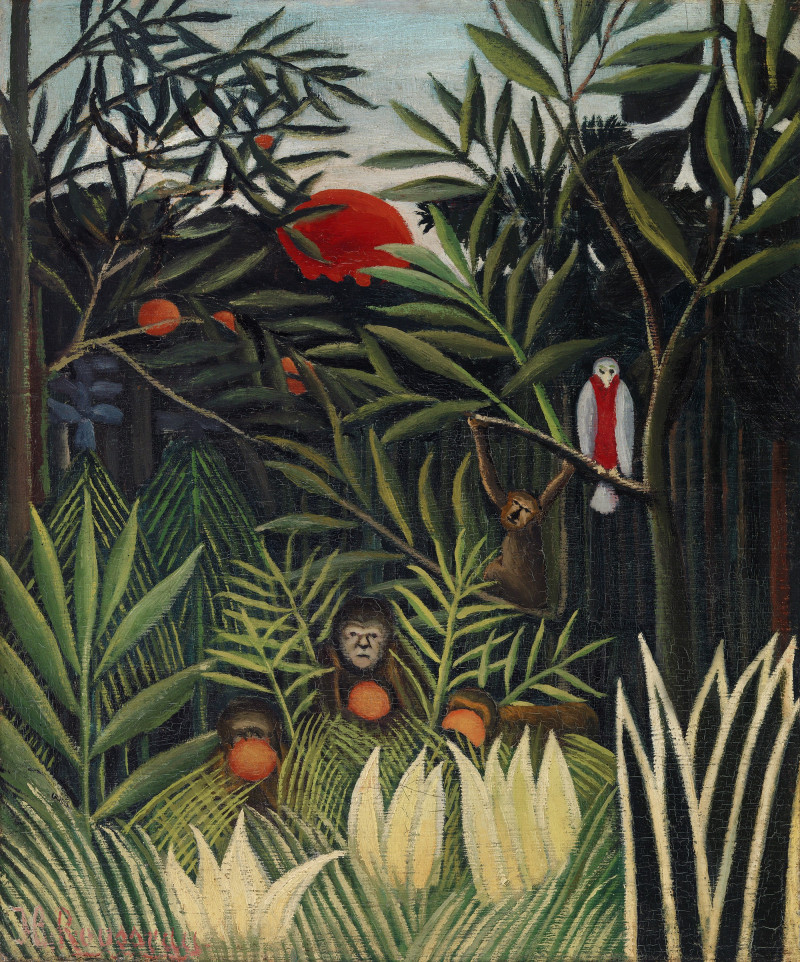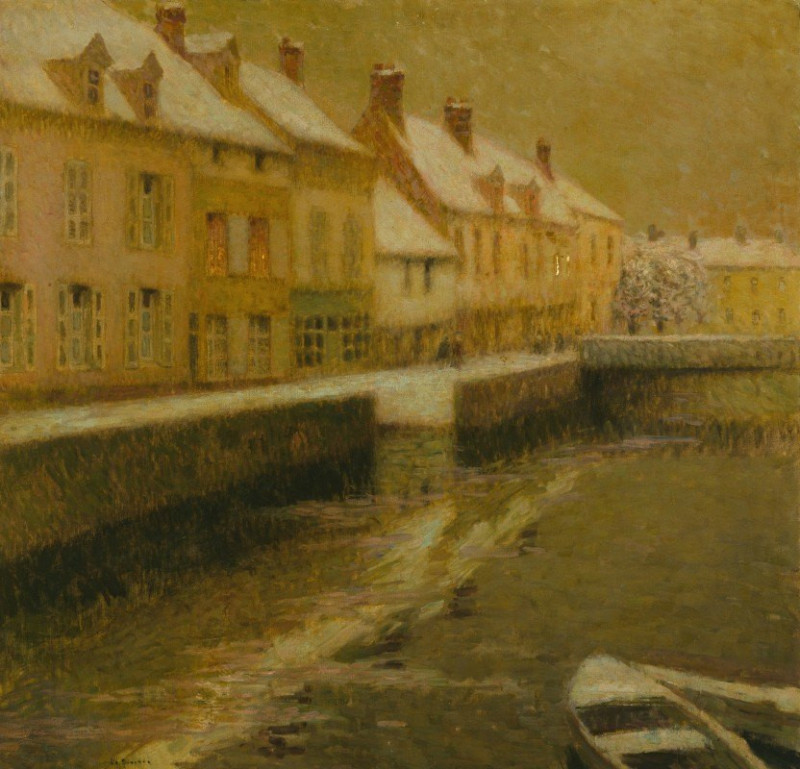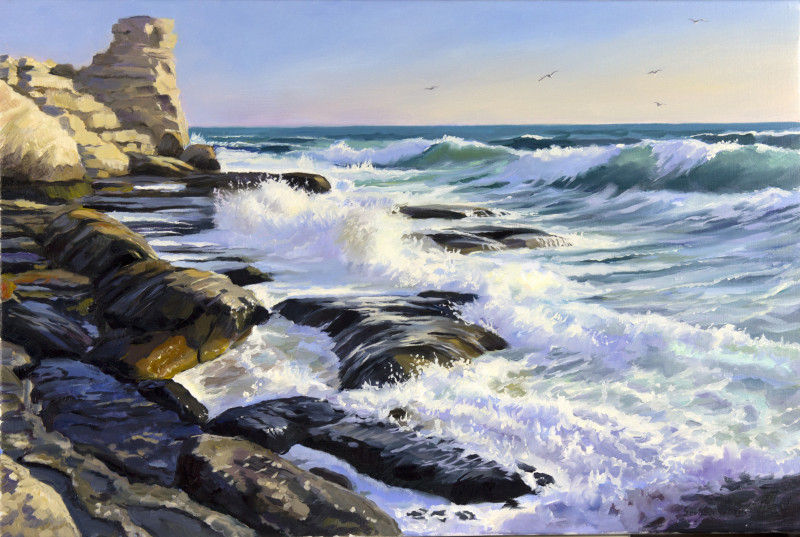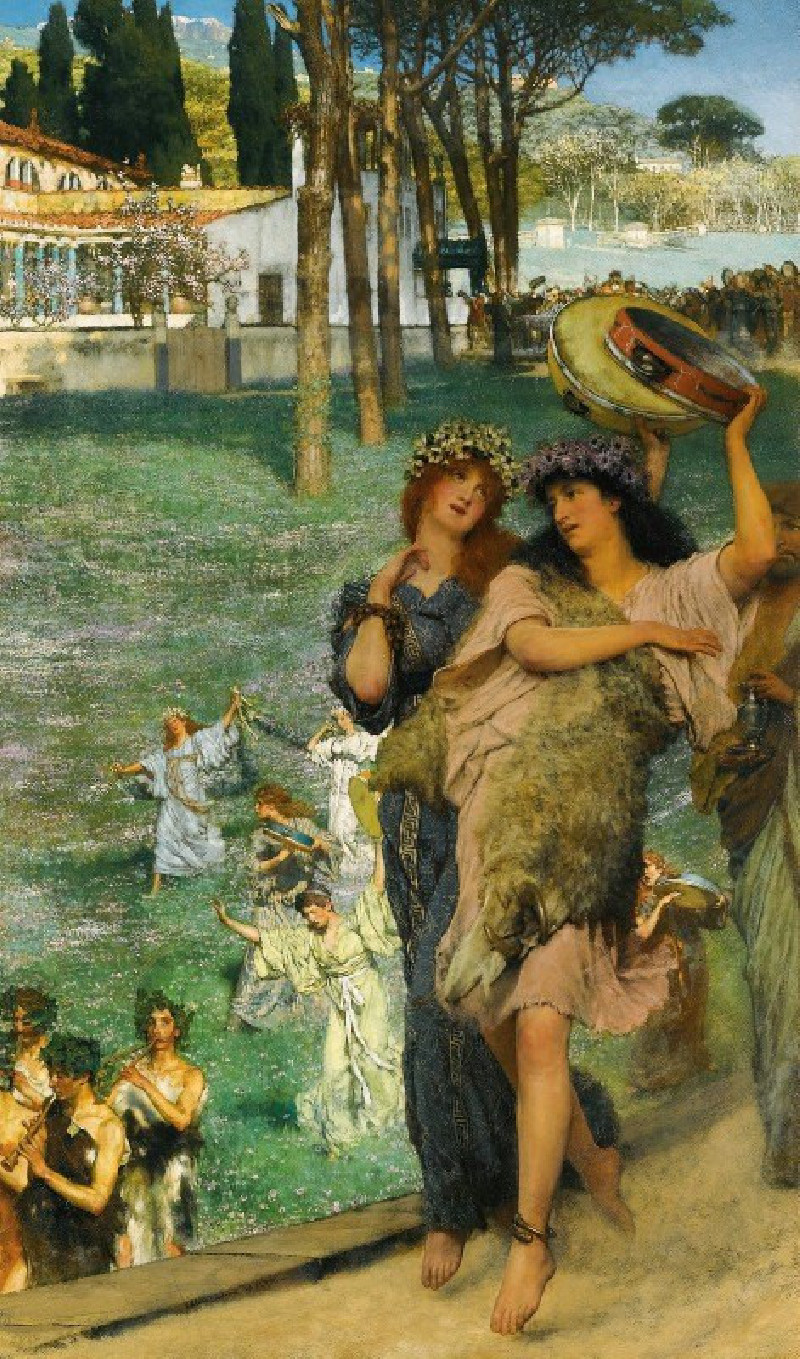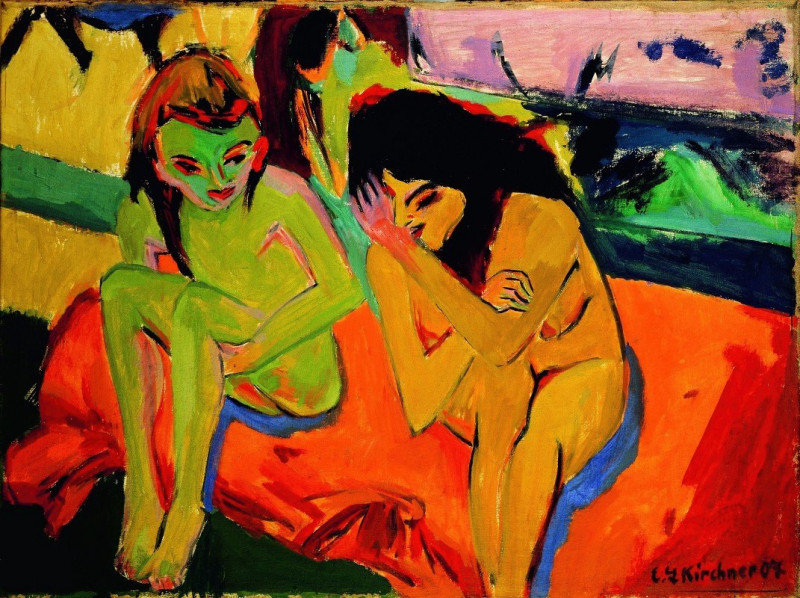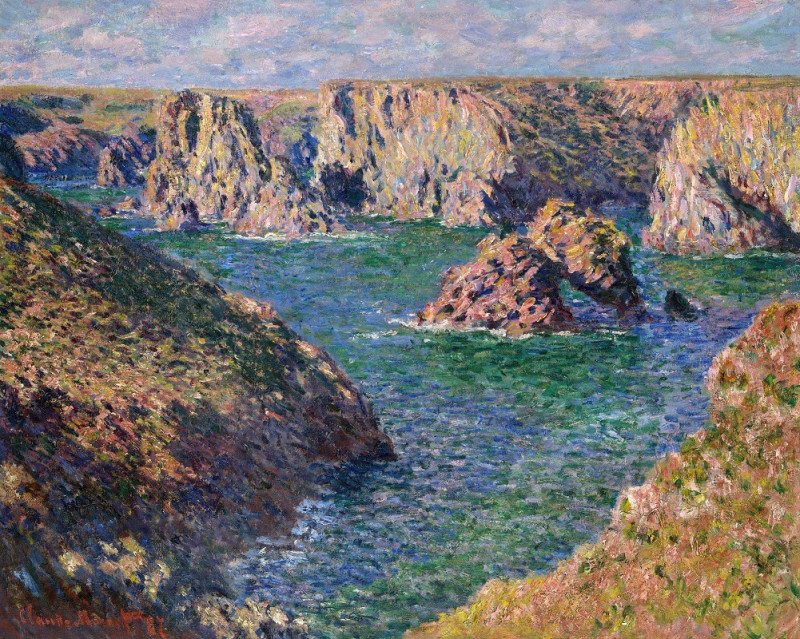Woman Bathing Her Feet In A Brook
Technique: Giclée quality print
Recommended by our customers
More about this artwork
"Woman Bathing Her Feet in a Brook" by Camille Pissarro is a serene and intimate portrayal of a simple, everyday moment. In this painting, Pissarro depicts a woman delicately bathing her feet in the cool waters of a brook. The scene is encased in a lush, verdant landscape, illustrating Pissarro's keen interest in nature and rural settings.The woman, positioned off-center, is captured mid-action as she leans forward to wash her feet. Her posture and movement convey a sense of grace and careful attention to the act. She is dressed in a rustic, reddish-brown blouse with what appears to be a white undergarment peeking through, and a dark skirt, which she has deftly lifted to keep dry, revealing a bare leg.The background is dominated by thick foliage in varying shades of green, dabbed lightly with sunlight filtering through the trees, adding a sense of depth and quiet isolation to the setting. Near the woman, on the grass, there is a small pile of what looks to be her additional belongings, possibly shoes and a stocking, emphasizing the private and transient nature of the moment.Pissarro's use of light and shadow, combined with a rich palette of greens and the finely textured brushstrokes typical of the Impressionist style, creates a vivid, yet soft landscape that embraces the figure of the woman.
Delivery
Returns
Blessed are they who see beautiful things in humble places where other people see nothing. — Camille Pissarro
Camille Pissarro (1830-1903) was born on St.Thomas (now the US Virgin Islands) to a Portuguese father and a Dominican mother. He went to Paris to study art at Ecole des Beaux-Arts. He was an early pioneer of pointillism and neo-impressionism and later became a mentor of many famous impressionist painters including Cezanne, Manet, Renoir, and Gauguin. His paintings depicted rural and urban French landscapes and lifestyle. Many of his works politically captured images of peasants and laborers. Today, he is considered the father of impressionism.

